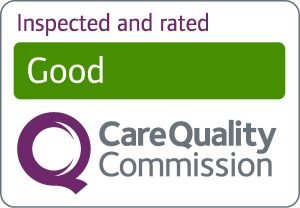What is an Ingrown Toenail?
An Ingrown toenail happens when the edge or corner of a toenail grows into the surrounding skin instead of straight out. This can cause pain, redness, swelling, and sometimes infection around the affected area.

Ingrown Toenail Removal
What causes an ingrown toenail and why does it happen?
It most often occurs on the big toe and can be caused by things like:
Cutting toenails too short or with curved edges
Wearing tight-fitting shoes
Toe injuries
Naturally curved or thick nails
In mild cases, soaking the foot and keeping the area clean can help. For more severe or recurring cases, a minor procedure may be needed to remove part or all of the nail to prevent it from growing back incorrectly.
How do I know if my toenail is ingrown or infected?
You may have an ingrown toenail if the edge of your nail is growing into the surrounding skin, causing pain, redness, swelling, or tenderness around the toe, most often the big toe.
If the area becomes warm, oozes pus, or is very painful, it may be infected. In that case, it’s best to see a healthcare professional, as you might need treatment such as antibiotics or a small procedure to remove part of the nail and stop it from growing back incorrectly.
Why Choose Chequers Health
Consultant Led Care
Fast and Effective Services
Modern and Comfortable Setting with Ample Parking
Patients from Bolton, Bury, Manchester, Wigan and the Northwest choose Chequers Health for Minor Surgery.
Our Treatment Process
Consultant-Led Care, Guided by Best Clinical Practice
Consultation
Your journey starts with a consultation with one of our specialists. During this appointment, we’ll assess your concern, review your medical history, and discuss suitable treatment options. If appropriate, we can perform the procedure on the same day. Otherwise, we offer a two-week cooling-off period to give you time to decide.
Procedure
The procedure is carried out under local anaesthetic to ensure your comfort. Our clinicians carefully remove the nail, lesion, mole, cyst, or other skin growth using a safe, minimally invasive technique. The area may be closed with a few small stitches, depending on the type and size of the removal.
Aftercare & Follow-Up
You’ll receive full aftercare instructions to help your skin heal properly. If stitches were placed, a stitch removal or wound check appointment will be scheduled, usually about 1 to 2 weeks after your procedure. Our team is always available if you have any questions or concerns during recovery.
Affordable Minor Surgery
Consultation £50
Procedure £189
They are truly the best among all the centres offering a range of services, including intravenous iron infusions. The staff were exceptionally kind, professional, and genuinely caring — I felt completely comfortable and well looked after throughout my visit.
Our Consultants

Frequently Asked Questions
The Phenol procedure is a common treatment for ingrown toenails. It involves removing the problematic part of the nail and applying Phenol to the nail matrix to prevent the nail from regrowing in an ingrown way. This method is quick, minimally invasive, and provides long-term relief.
- Local Anaesthetic: The toe is numbed to prevent pain.
- Nail Separation: The ingrown part of the nail is carefully lifted from the nail bed.
- Partial Removal: Only the problematic portion is removed.
- Phenol Application: Phenol is applied to stop the nail from regrowing incorrectly.
- Flushing and Dressing: The area is cleaned and bandaged to prevent infection.
No, the area is numbed with local anaesthetic before the procedure, so you shouldn’t feel any pain during the treatment. You may experience some mild discomfort during recovery.
Recovery is usually straightforward. You will have a follow-up visit to check healing and receive guidance on care. Most patients can return to normal activities soon after the procedure.
The Phenol procedure is designed to prevent the nail from growing back incorrectly, significantly reducing the chance of recurrence.
Some tests use a spirometer, a device you breathe into (through a mouthpiece) that measure the amount of air and how quickly you’re able to inhale and exhale.



